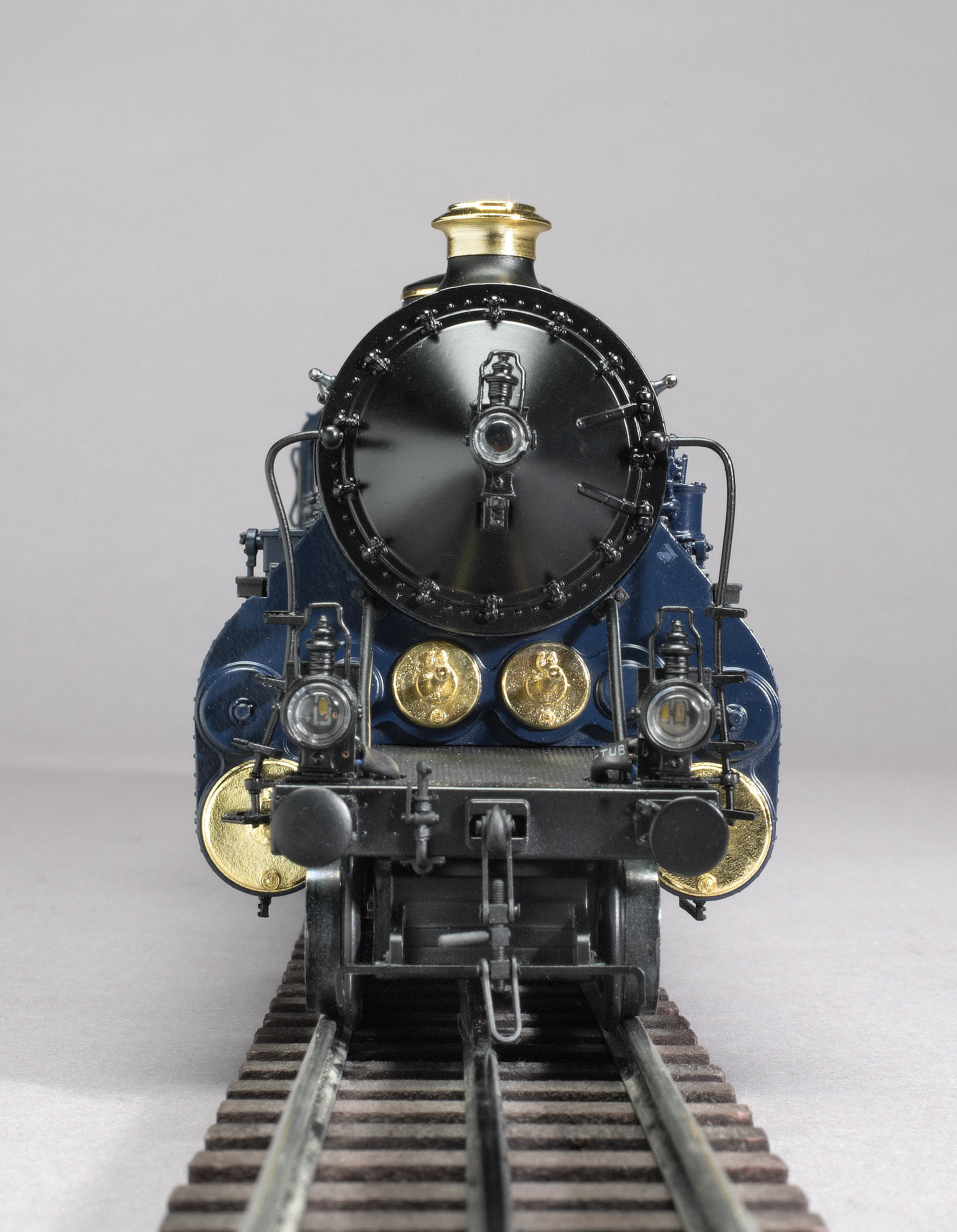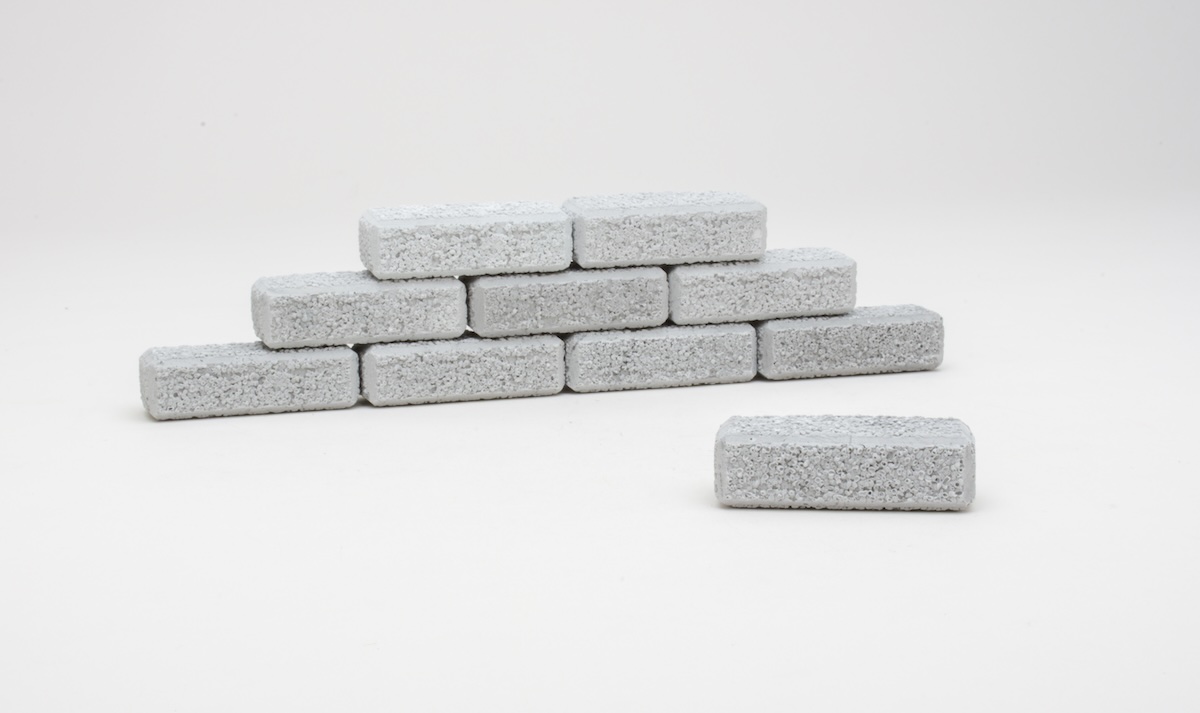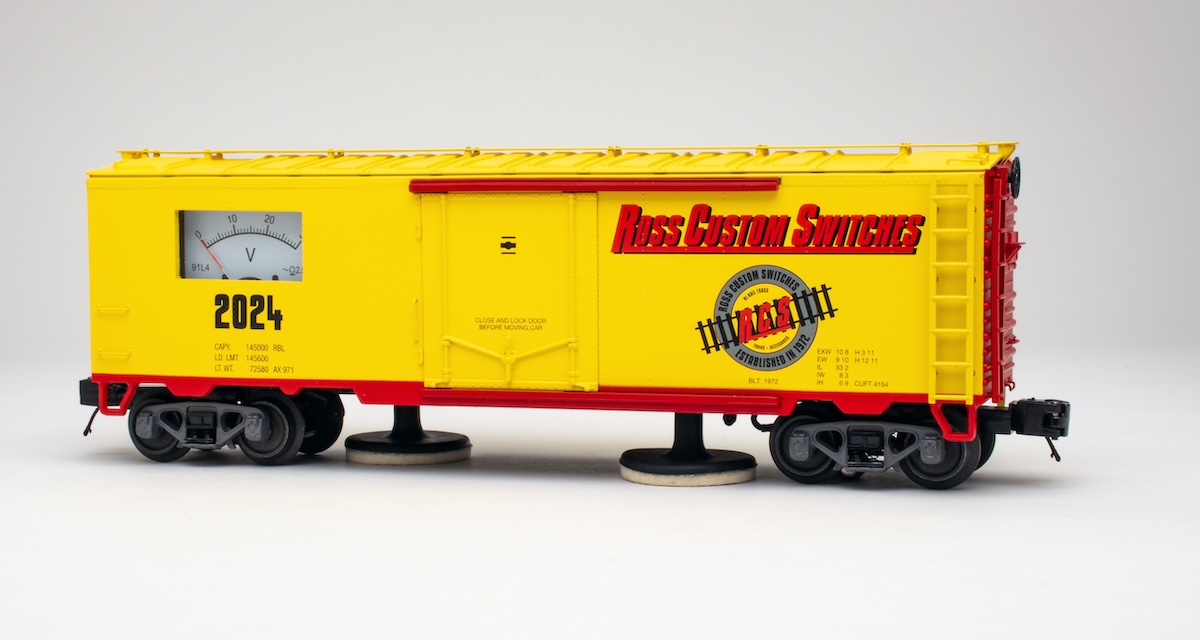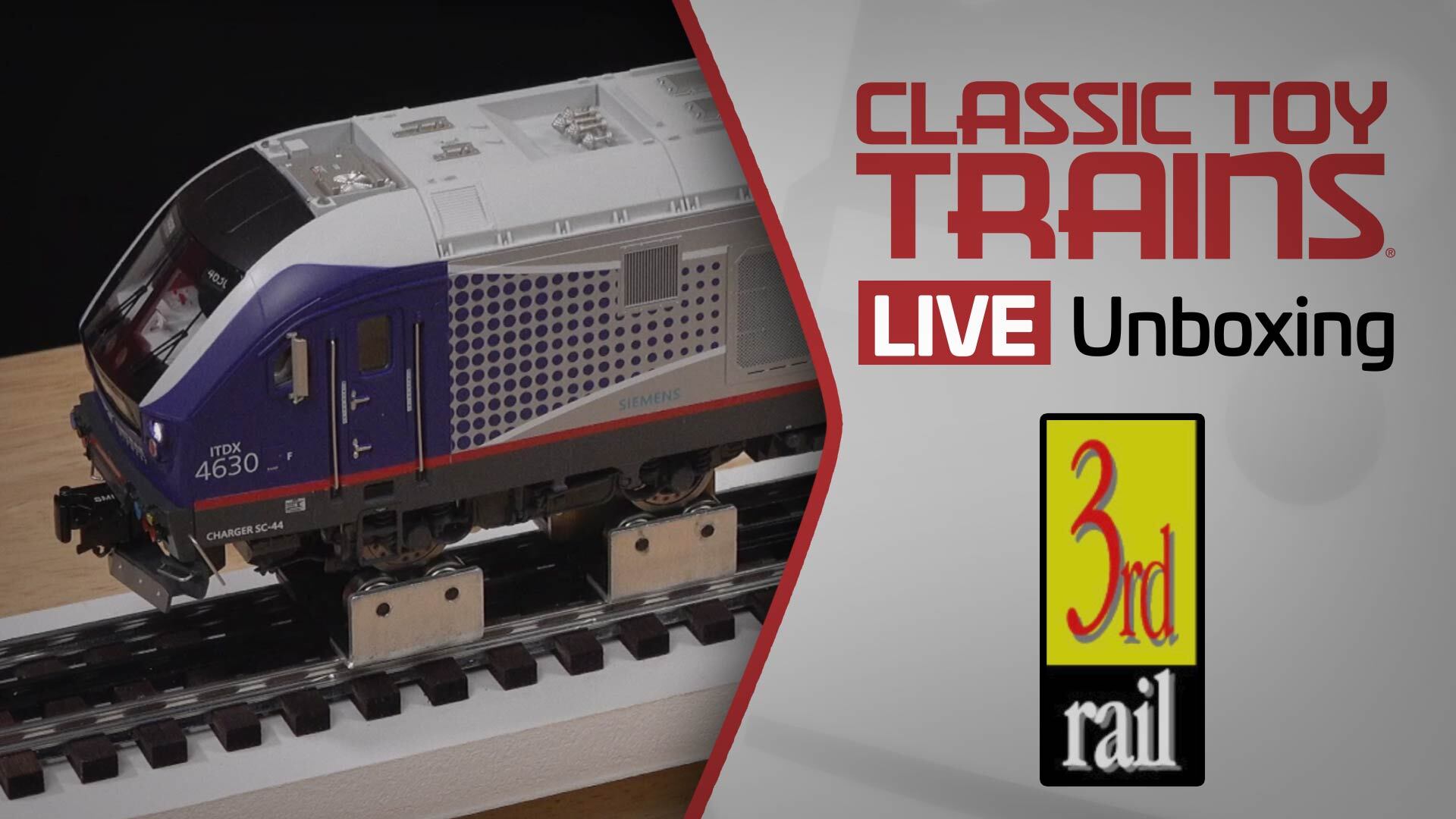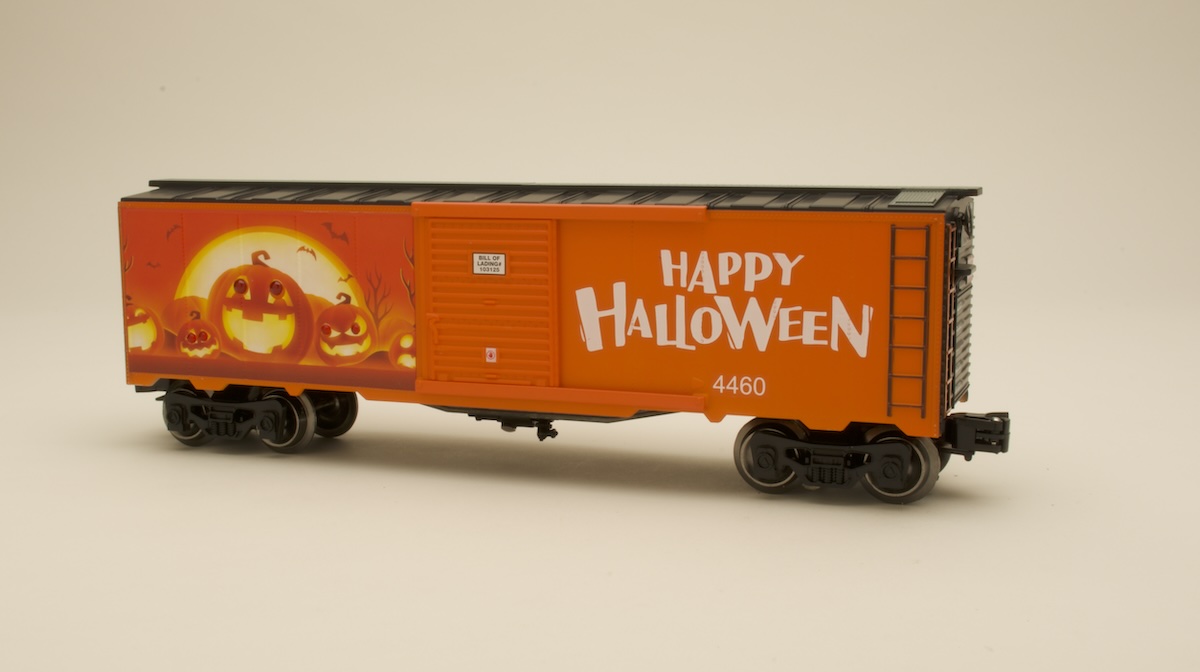Seven major operators provided transportation for this amalgamation. They were merged into the Deutsche Reicheisenbahnen in 1920. In 1924, the grouping became the Deutsche Reichsbahn-Gesellschaft and, in 1937, Deutsche Reichsbahn. In spite of the divisions and frequent reorganization, one element of pan-Germanic pride was that the railways of the various states were generally run with great efficiency.
The focus of our attention is an O gauge model of a Royal Bavarian State Railways locomotive built by MTH Electric Trains. The railway normally acquired locally built power, but the line purchased four locomotives from Baldwin to study American design and production standards. That resulted in a number of new locomotive designs, one of which was the S 3/6 class.
The S 3/6 engines were four-cylinder 4-6-2 Pacific express locomotives built between 1908 and 1931. They were designed for speedy operation (maximum speed was about 74 miles per hour) on both hilly and flat terrain.
There were several variations of the basic design, and they all were given a major re-build between 1953 and 1957. After the overhaul the steamers were among the most efficient on German railways, but poor execution of the modifications eventually caused cracking in the boilers. All but one were withdrawn by 1962 – a lone example operating in regular service until 1969.
Several of these 4-6-2 locomotives survived the scrapper’s torch, and you can occasionally find one in operation on fan trips, appropriately enough, in the German state of Bavaria.
Opening the box
For me, the painting and decoration evoke a time before the First World War, when Europe (for all its faults) had plenty of style on display. There is rich color on this MTH model as well as brass-trimmed shine – but the locomotive doesn’t look like something from the point of a circus train.
The pilot of the locomotive may be the wildest I’ve seen on an O gauge steamer. It has the standard sprung buffers, link coupler, and otherwise flat front deck. But the rest of the face is eye catching!
The copper-colored fronts for the four cylinders offer the effect of four little cannons pointing forward; ready to clear the track of any cows crossing the line. Oh, who’s kidding whom? German cows would be too disciplined to trespass on the right-of-way.
This striking visual is helped by two large classification lanterns on the platform. There is a headlight in the middle of the firebox.
Steps climb up from the side, by the steam chests, where a crew member climbs up to the running board. This certainly deviates from American practice, where the steps rise from the front of the pilot and climb up toward the running boards.
The smokebox has some nice rivet and latch detail, and it has more of a point than a streamlined nose like, say, a New York Central Dreyfuss Hudson.
While the Bavarian boiler design omitted much of the rivet detail that an American boiler might have, it made up for it in piping and brass trim. Starting at the smokebox door, six brass-colored bands demarked the boiler sections.
The smokestack has a nice brass accented cap, as do the steam and sand domes. The whistle and pop-off valves have brass accents, and the sand lines and other piping match.
This model has the most interesting steam chests that I’ve seen this side of a jumbo Norfolk & Western Mallet. The design above the running board makes each chest look like half a teardrop. A builder’s plate is affixed to the side of the chest, and the royal emblem of Bavaria is just above the chest.
The wheel rims and running gear are all gently subdued in color, and the gear array is a full, prototypical setup that is captivating at slow speed.
The cab has steps running up the deck, with two grab irons on each side of the cab. The firebox has a detailed backhead with illumination and gauges with white-painted faces. The crew figures are standing. The side windows have panes.
There are side doors to prevent the crewmen from falling out of the cab. The doors are sprung, which is a neat design element.
The tender is an efficient-looking square box with rivet detail, an add-on chunk-style coal load, and a grab iron running the length of the coal bunker on the right side.
Ladders go up both rear corners, and there is a stanchion at the top. There are two lights about midway up the rear and a headlight on top of the tender’s deck in the middle of the car. A coil coupler is mounted below.
One practical note regarding handling – watch your fingers! Unless care is exercised, the tender stanchions can be bent during routine handling.
I don’t believe our photos quite capture the color range of the model. The blue paint scheme is a design from the reign (1845-86) of King Ludwig II. Yeah, he was the crazy one. The paint scheme is quite rational, however.
The boiler face is black, as are the cab roof and top of the tender. The boiler is a so-called Russian iron blue, last seen in O gauge versions of the Erie Triplex, for example. The face of the steam chests, the cab, and tender are a darker royal blue. Mix in the brass-colored trim items and you have a complex and classic paint scheme that was skillfully applied.
On the test track
The bell is a bell, but the whistle sounds great. It has a high-pitched European style that evokes images of sinister Bulgarian agents doing the bidding of the Central Powers on the Orient Express. The other chuffs and operating sounds are fine.
Smoke output is ginormous, and just about every puff came out as a smoke ring. Cough, cough.
The model features ProtoSound 3.0, a new generation that, among other feaures, does away with the need for a battery. The model uses a capacitor to store an electrical charge to facilitate shutdown sounds after track power is dropped. There is a slight hesitation on startup that may make you think something is amiss. This is the time needed for the capacitor to charge up.
I for one will not mourn the departure of our 9-volt friend.
Motor operations and the sync of the sounds were terrific.
Our conventional-mode low-speed average was 4.5 scale miles per hour, while the command-mode low speed was 3.8 scale miles per hour.
The high-speed average was 110.6 scale miles per hour.
The drawbar pull was 2 pounds.
This German locomotive is both pretty (not a term normally associated with O gauge locomotion) and a solid performer. It looks great, sounds authentic, and has good pulling power. It may not look at home rolling through Plasticville, but it may steer your O gauge model railroad experience in a totally new direction.
Features: O-54 operation, 1:45 scale model, die-cast metal construction, ProtoSound 3.0 command and sound system, smoke unit, wireless drawbar, coil coupler.





